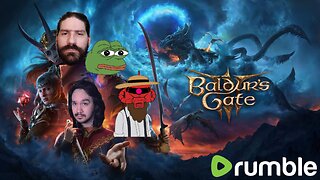Premium Only Content

ASMR | Relaxing Video | Calming Video | cute Animal videos | Wild animal videos | Birds flying video
Since ASMR is a recent discovery, research into how it works is still new. Although we do not yet have a solid explanation of how ASMR works, researchers have hypotheses, and the research that has been done provides some intriguing evidence.
In one study, researchers performed fMRI brain scans of people while they were experiencing ASMR. Participants in the study showed activity throughout their brain, called whole brain activation, during periods of ASMR tingling. There was also significant activity in the area of the brain associated with self-awareness, social understanding, and social behaviors, including grooming behaviors in non-human primates. Because the effects of ASMR are similar to the effects of social grooming in primates, the researchers theorized that it might be a grooming response that remained after evolution.
There is little research into the benefits of ASMR for sleep or sleep disorders. However, anecdotal evidence and existing studies do demonstrate that ASMR may help some people sleep better.
What we know about how ASMR works is consistent with claims that it improves sleep. For example, ASMR appears to activate regions of the brain associated with calming, sleep-inducing hormones like dopamine and oxytocin.
Among people who use videos or audio clips to induce ASMR, 82% use ASMR to help them fall asleep. It is the second most common reason people use ASMR media, with overall relaxation being the most common reason. Bedtime is also the most popular time to use ASMR media, with 81% of respondents in one study reporting that they preferred to listen or watch just before falling asleep. Only 6% preferred to use ASMR media before noon.
ASMR is a very personal experience. A video or sound clip that triggers the response in one person might not do the same for another. Because of this, people can use ASMR for sleep in different ways.
Doves
The dove, often in tandem with the image of an olive branch, has been recognized as a symbol of peace for many centuries, with symbolic roots in the religious traditions of Judaism and Christianity. In their religious texts, there is a story about a cataclysmic flood, after which a dove carrying an olive branch is seen as a sign of life, and the end of the flood. Over time, the dove as a widely recognized peace symbol has become integrated into traditions both secular and political. The symbol for World Peace Day itself is a dove holding an olive branch.
Sheep/Lambs
Sheep are well-regarded for their docile natures. This is sometimes seen in a negative light, using sheep as a metaphor representing the stupid or easily led. But in a more positive sense, sheep are seen as non-violent, gentle and peaceful. In Christianity, the figure of Jesus is often called "the Lamb of God," both for his message of peace and ultimately his purpose as a sacrificial figure, which is central to the religion's beliefs.
Frogs
In Native American traditions, the frog can represent life and fertility. In popular culture, this symbol was the inspiration behind a now-familiar logo: a cartoon frog holding the fingers of one hand in a peace sign. The logo may seem like it came out of the 1960s hippie counterculture, but its origins are actually more recent than that. It is the trademark of Peace Frogs, a clothing company that was founded in 1985, and named for the traditional Native American symbol (and possibly for the 1970 Doors song, "Peace Frog").
Cranes
In Japan, the crane has long been seen as a sign of good luck. It is a tradition to fold 1,000 origami paper cranes, called senbazuru, to bring luck. In the 20th century, the tradition took on further significance after Sadako Sasaki, a girl who lived in Hiroshima when the United States dropped a nuclear bomb on the city, endeavored to make a senbazuru before she died of the leukemia she developed from the radiation. Every year, people leave senbazuru on a statue of Sadako Sasaki in Hiroshima Peace Park. A plaque on the statue reads, "Peace on Earth."
Kingfisher
The kingfisher is also known by another name: the halcyon. This name comes from the Greek legend of the Halcyon, a bird who lived by the sea and had the power to calm the wind and the waves at will in order to protect its eggs when necessary. Hence, kingfishers remain a symbol of peace to this day, and the word "halcyon" has entered the English language as a synonym for calm and tranquility.
Manatee
Manatees are the gentle giants of the sea, spending their days mostly sleeping and eating — plants only, as these peaceful creatures are herbivores. They are friendly, and even use hugging and kissing body language to greet and communicate with each other. The friendly, docile beasts have no prey and bring no harm to any other creatures. This is perhaps why in West African tradition, manatees are considered sacred, and killing one requires atonement.
-
 43:39
43:39
WickedVirtue
3 hours agoLate Night Spooky Plays
12K1 -
 2:04:02
2:04:02
Glenn Greenwald
6 hours agoTrump and Rubio Apply Panama Regime Change Playbook to Venezuela; Michael Tracey is Kicked-Out of Epstein Press Conference; RFK Senate Hearing | SYSTEM UPDATE #508
91.9K111 -
 58:36
58:36
Total Horse Channel
8 hours ago2025 CSI3* A Coruña Porsche - Grand Prix
18.5K -
 2:10:32
2:10:32
megimu32
4 hours agoOTS: Mighty Morphin Power Rangers & the 90s Movie That Defined a Generation
21.5K11 -
 1:14:53
1:14:53
Badlands Media
18 hours agoThe SITREP Ep. 128
35.5K8 -
 2:44:56
2:44:56
BubbaSZN
4 hours ago🔴 LIVE - FORTNITE WITH NEW KEYBOARD
14.3K1 -
 2:17:29
2:17:29
Mally_Mouse
5 hours agoThrowback Thursday! Let's Play: Cuphead
20.1K1 -
 LIVE
LIVE
StevieTLIVE
5 hours agoWarzone HYPE Duos with GloryJean
33 watching -
 1:05:11
1:05:11
Donald Trump Jr.
7 hours agoBuilding the Future with American Bitcoin, Plus Eric's Triggered Debut! | TRIGGERED Ep.272
117K57 -
 6:27:18
6:27:18
RaikenNight
7 hours ago $0.02 earnedThe Baldur Boyz are on a Mission to Save the City
2.75K